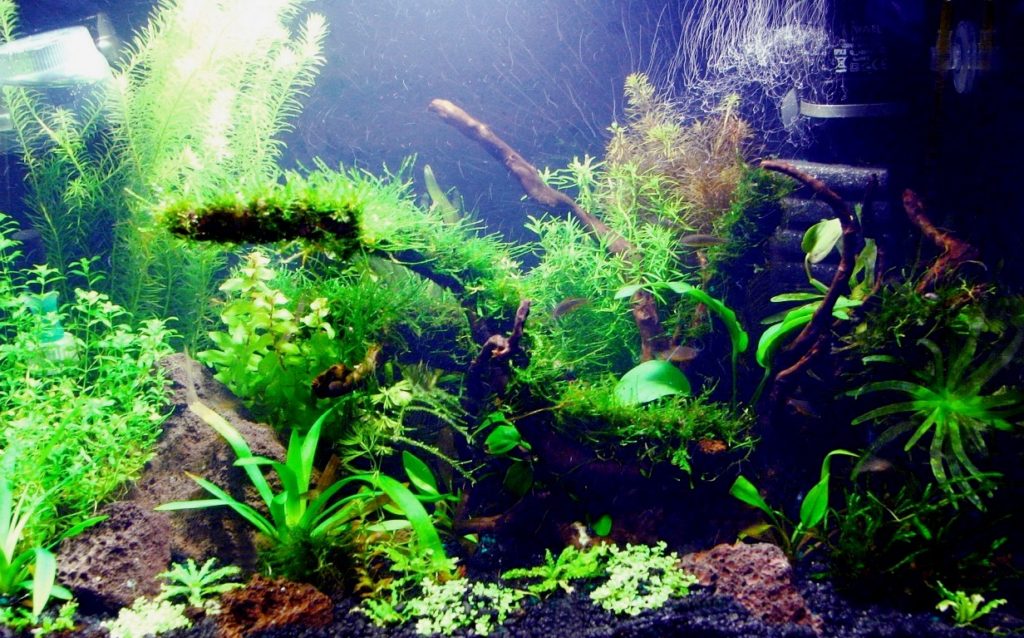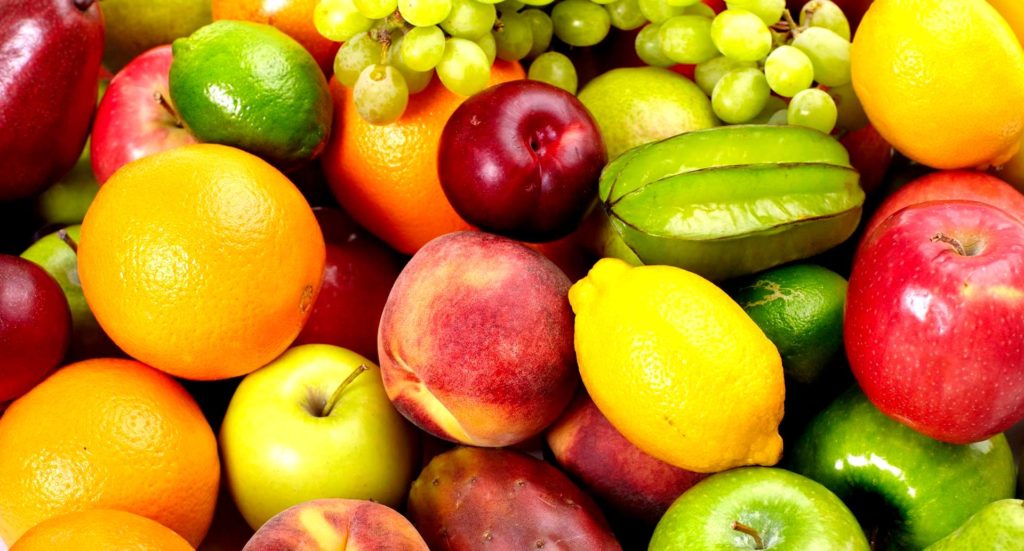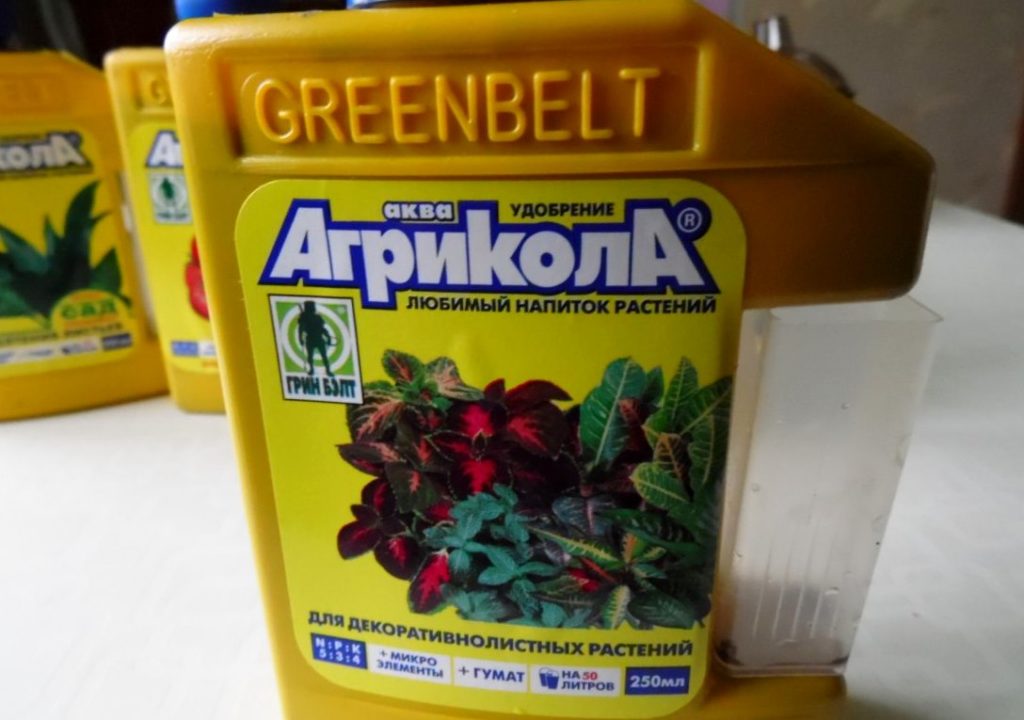Rating of the best fertilizers for flowers for 2024

Green spaces delight our eyes everywhere: in the garden at the dacha, in the fields and meadows, on the windowsills of the house. Their year-round flowering and lush greenery cheers you up, improves your well-being, makes you enjoy life. But each culture needs certain care, including top dressing. Without this, they will not grow up beautiful and healthy. Stores will present a wide range of fertilizers to choose from for both conventional and elite crops. What to look for in order not to make mistakes when choosing a fertilizer for flowers? The main thing is to take into account the variety of plants, the period of their development and the current state.
Fertilizers for flowers: what are there and how to use

All living organisms must be constantly fed. This also applies to flowers. The main nutrients, so necessary for growth and development, they take from the soil, air and water. But do not forget about the regular introduction of auxiliary compounds, without which crops begin to wither and die over time.
Today there is a huge number of all kinds of fertilizers, differing in types, packaging, weight, average price. The best manufacturers regularly offer their new products. How to choose the most suitable from such a variety? It is worth studying an overview of popular tools, reading the characteristics, reading reviews and advice from summer residents. This is the only way to choose the best products for feeding plants planted in open ground and indoor conditions.
All fertilizers are divided into two main types:
- Organic. It is based on natural materials. The main advantage is that they gently affect living organisms. The negative aspects include the presence of an unpleasant odor and staining after their application. The main representatives of this category: rotted green crops, compost, manure. Manure is considered the most nutritious, especially horse manure. In areas with high humidity, they fertilize the soil in the spring, in arid - in the fall.
- Inorganic (mineral). Artificial chemical compounds. The advantages include quick and easy assimilation by cultures. The main disadvantage is that in case of an overdose, they will get sick or die.
What are the forms of release:
- Granular. The main purpose is to fertilize garden plantings.
- Soluble. The main feature is that the powder dissolves in water immediately before watering.
- Liquid.A concentrated solution, used only after dilution in water and is mainly used for watering indoor crops.
- Tablets and candles. Convenient and practical plant care product. They are placed in the ground and dissolve gradually as they are watered. The only negative is the uneven distribution of useful components.
Areas of use:
- special - designed for specific purposes, for example, fertilizing roses.
- universal ones have wide functionality.
The main varieties in composition:
| View | Description |
|---|---|
| Potash | The presence of the component in the soil helps to retain moisture in the stems and shoots, and minimizes the possibility of plants getting sick. |
| Phosphoric | Lack of phosphorus adversely affects the process of fertilization and photosynthesis, flowering and fruiting. |
| Nitrogen | If there is not enough nitrogen in the soil, then the leaves turn yellow and fall off over time, the plant does not develop well. |
Let's consider the variety of species in more detail.
Nitrogen

Obtained through the synthesis of hydrogen, ammonia and molecular nitrogen. The latter is an integral part of alkaloids, vitamins, enzymes, chlorophyll, proteins, nucleic acids and other compounds. Subdivided into:
- ammonium - nitrate (ammonium nitrate);
- nitrate (calcium nitrate, sodium nitrate);
- ammonia (ammonia water and liquid ammonia);
- amide (calcium cyanide, urea);
- ammonium (ammonium chloride, ammonium sulfate).
The peculiarities of nitrate are that they are poorly absorbed by the soil and are quickly washed out during irrigation and precipitation.
The most popular are ammonia products. They are available in concentrated form and are affordable, and the increased acidity of the soil caused by their use is eliminated by liming.
This type of fertilizer dissolves easily in water and quickly reaches the root system. They are used on various soils, including chernozem ones. They are especially valuable on podzolic soil. In the presence of sandy soils, fertilizers are applied in the spring and summer, while on loams, manipulation is carried out in the fall, before digging.
Phosphoric

It is a component of all proteins. Phosphorus is a product of processing of phosphorites, waste from metallurgical enterprises, vivianite, apatite. Fertilizers of this type can dissolve easily or difficult in water. Water-soluble are used to feed various crops planted in any soil. Sparingly soluble are used mainly on acidic soils.
Thanks to such manipulations, the properties of planting tissues improve, their development is accelerated, the level of flowering and the quality of fragrant buds increase. They are introduced in autumn for plowing or in early spring before tillage. A little phosphorus will not hurt during flowering and fruiting.
It is not recommended to apply phosphorus fertilizers to chernozem and calcareous soil. The presence of an alkaline or neutral environment does not allow the root system to fully feed on such useful elements.
Potash

Excellent helpers helping crops synthesize sugar, regulate many life processes, endure frosty winters and dry summers, not die from pests. They are a fossil ore containing potassium salts and soluble potassium. It is used only in dissolved form.
There are two types:
- concentrated (artificially created);
- potassium salts (crushed natural minerals).
Both options dissolve easily in water. Potassium chloride is used on acidic soils and in the presence of high humidity, and potassium sulfate - in regions with minimal rainfall.
It is worth paying attention to the dosage. A high concentration can lead to the death of crops, so such additives are applied in small doses. It is best to mix them with other more gentle formulations.
Complex

The most common option, which contains more than two batteries.They are divided into the following types:
- fertilizer mixtures - the result of mixing complex and simple additives;
- complex-mixed - a mixture of complex and simple fertilizers with the addition of sulfuric or phosphoric acid, followed by neutralization;
- complex - a chemical production method is used.
It is worth using such compositions very carefully, based on the needs of a particular plantation. They are introduced in summer and spring.
Organomineral

They are used to restore soil quality, increase the supply of humus and nutrients, which has a positive effect on the development of plantations. Popular drugs are available in the form of granules, tablets, liquid and free-flowing mixtures. The most widely used are peat-mineral - ammonia, peat-mineral and peat-ammonia fertilizing. A natural source of useful trace elements is sapropel - the remains of animals and plants that are at the bottom of water bodies. It is used in greenhouses.
Such dressings are applied to various soils. Soil mixtures are also created with their participation. Liquid options are used for foliar feeding.
Bacterial

They contain soil microorganisms, which are so necessary for the normal growth and development of crops. They lack nutrients, but their main task is to increase soil fertility and convert unavailable nutrients into an accessible form. The most demanded feeding of this type are phosphobacterin, azotobacterin, nitragin and AMB.
The main difference between such drugs is that they are produced for one season, since they cannot be stored for a long time. They can be stored in dry rooms at temperatures from 0 to 10 degrees, in undamaged factory packaging. It is strictly forbidden to keep indoors together with volatile pesticides.
Microfertilizers

They consist of trace elements that flowers need in small doses. They are:
- cobalt;
- copper;
- zinc;
- manganese;
- boric and so on.
Thanks to them, plants are not afraid of fungal diseases. To resist fungi, flowers need to improve their own physiological and biochemical processes, for which these feeding are used. They contribute to the development of plant resistance to pathogens.
Criterias of choice

As soon as flower lovers observe such "symptoms": slow growth, thin and weak stem, lack of brightness of leaves, no color, the appearance of yellow spots, then the question arises, which is better to buy a drug to improve the condition of crops. There is no consensus on this score. Which company is better depends on the preferences of the person. You can buy a Japanese-made product that cannot be attributed to the budget option, or you can buy an inexpensive Russian-made drug that will show miracles of recovery.
It should be borne in mind that the state of aggregation of dressings can be of two types:
| condition | Benefits | disadvantages |
|---|---|---|
| Liquid | Economical, long shelf life. | Longer absorbed. |
| Solid | Easy to use, quickly absorbed by flowers. | The solution is made for one irrigation. |
Where can I buy a fertilizer of interest? There are special outlets selling high-quality products of this kind. According to buyers, you can order fertilizers online in an online store, or you can do it yourself at home. Everyone chooses based on their material well-being and availability of free time, as well as the desire to do something with their own hands.
Rating of quality fertilizers for flowers for 2024
Organic
Manure

There are several options:
- rabbit;
- bovine;
- horse.
An amazing means of promoting the growth of plantings. It is considered the most demanded organic fertilizer. In fresh form, it is introduced into the ground only for autumn digging. Otherwise, it may not have time to decompose and harm the flowers. Terms of use: for 1 sq.m. one ten-liter bucket of component is assumed.The number of dressings is 3 or 4 times a year. In order not to accumulate nitrates, you need:
- Prepare a cooker hood. Fresh manure is poured into a large container, filled with water in a ratio of 1/3. Settled for 7 days, stirring regularly. If the weather is rainy, then the period increases to 14 days. The resulting composition is diluted with water in a ratio of 1/5 and the plantings are watered.
- Humus. It lasts from 2 to 3 years. Can be poured under the root system.
Ash
The best option is the result of burning grape vines, sunflowers, seeds. But you can burn everything that is not needed in the garden, from weeds to cut branches of trees. You can use both dry and diluted in water (pour 1 tablespoon ash with 1 liter of water). A positive result in both cases is ensured.

Used by:
- during planting plantings in the ground;
- during the growing season;
- leaves are simply sprinkled so that aphids, caterpillars and other harmful insects do not eat them.
Bird droppings

Designed to combat pests and diseases, and to improve flower growth. Chicken droppings stand out for their positive properties. But it cannot be used undiluted. It is highly concentrated and can be detrimental to the development of cultures. An extract is made from it, and after that the agent is also diluted with water. When fresh, it can be laid out before digging.
Green manure
Almost all green herbs growing on the site can be used. But nettle is popular due to the presence of a huge amount of trace elements in it. The cooking method is as follows:
- A large barrel is taken, where the chopped grass is placed.
- The container is exposed to the sun.
- Rain water is poured inside, leaving 20 - 25 cm to the edge.
- A fine-mesh mesh is pulled from above to avoid debris and insects.
- Mix thoroughly every day.
- Infused for 15 days.
- As soon as the surface is covered with foam, the solution is ready for use.
- Before watering, it is necessary to dilute the mixture with water in a ratio of 1/10.
Compost
A universal remedy consisting of many useful elements that allow plantings to accelerate their growth and development. Can be used at the time of digging or throughout the year. It not only makes the soil better, but also supplies the root system with minerals. For its preparation, all waste from the kitchen and the remains of vegetables and fruits from the garden are suitable. The main condition is to prevent household chemicals from entering the compost pit. To speed up the cooking process, you can use the remnants of jam or sweet compote.
Peat

This fertilizer can be purchased at any gardening store. Peat soil is more saturated with oxygen, successfully retains moisture, but there is a minimum amount of nutrients in it. Peat happens:
- transitional;
- riding;
- low-lying.
I mainly use it to regulate soil moisture. As a bait, it is not of particular value.
Natural
Humus fertilizing
A universal top dressing for both garden and home flowers. It must be diluted in water before watering, observing the proportion: 10 g of humus per 3 liters of water. Before carrying out the procedure, you need to pour a little water over the soil in the pots. Deciduous humus is in great demand. They improve the composition of the soil before transplanting. Animal humus is diluted in water in a ratio of 100 g per 10 liters.
Aquarium water

An alternative is regular aquarium water. It promotes the rapid growth of plants, due to the presence of a large number of useful components in it. Watering is carried out in spring or summer, during the period of active growth of shoots. Don't overdo it. Once every 30 days is enough. The presence of a large number of microalgae in the ground can lead to acidification and greening.
Coffee
Note to all lovers of a natural product. Do not rush to throw away the remaining thick, but add to the soil and mix well. An excellent food for lilies, azaleas, roses, gladioli, all evergreens. You can replace the coffee grounds with tea leaves.
Amber
During the processing of amber, succinic acid remains, which is so necessary for greenery. It is worth stirring 1 g of the substance with 5 liters of water and watering the plants, they will immediately grow, and will delight with their attractiveness. The procedure is performed once a year.
Sugar additive
The most common natural product, always at hand. Glucose solves several problems at once: it saturates the soil with energy and promotes increased crop growth. For glucose to be fully absorbed, carbon dioxide is needed. To increase its amount, sugar is needed, which contributes to the development of mold microorganisms. Along with glucose, it is worth using the drug "Baikal EM-1".
You can make your own sugar refill.

Step-by-step instruction:
- 1 tablespoon of sugar is dissolved in 0.5 liter of water.
- Watering is carried out once every 30 days.
- The result is the stabilization of the development of the root system.
You can pour sugar directly onto the ground, and then pour it with clean water. The procedure is performed no more than once a year.
You can make a glucose supplement directly. Glucose is also sold in a pharmacy, then 1 tablet is dissolved in 1 liter of water.
Fruits

Vitamin lovers do not have to throw away banana, orange and tangerine skins, but grind them, place them in a liter container, taking up ½ of the space, and fill them with water. Defend for a day, strain, water the ground.
Onion peel

Procedure:
- Fill 50 grams of onion peel with 2 liters of pure water, boil for 10 minutes over low heat.
- We insist 3 hours under the lid.
- We water once every three weeks.
The solution must be consumed completely, since it cannot be stored.
Yeast

Amazing flower growth agent, easy to prepare and doesn't cost a lot.
Procedure:
- 1 liter of clean water is slightly warmed up until warm.
- We take “wet” yeast (10 g), 1 teaspoon of sugar and dissolve in the prepared water.
- We insist 2 hours.
- Mix the mass with 5 liters of water.
- Watering the flowers.
If you have dry yeast, you can make the following mixture:
- 10 g yeast;
- 10 liters of water;
- 3 tbsp. l. sugar (with a slide).
Toothpaste or powder
We connect:
- 30 g of wood resin;
- 30 g - dental powder;
- 10 g of copper sulfate;
- 3 liters of water.
Watering is carried out at the root.
Egg shell

Grind and mix with the soil that will be used for plant transplantation. You can also use the shell for infusing water, which you can water later.
Liquid left over from rinsing fish or meat
If plants are sometimes watered with this composition, they will grow better and give an amazing color.
Water after rinsing cereals
Do not rush to pour out such a cloudy liquid. It is rich in magnesium, silicon, phosphorus, iron, so necessary for successful development.
Mineral
Universal for flowers 0.9 kg

The Russian manufacturer produces a complex top dressing, which has a positive effect on the growth and development of flowers. It contains potassium, phosphorus and magnesium. Used for all types of plants, both indoor, balcony, and garden. Performs the following tasks:
- enhances flowering;
- prolongs the flowering period;
- promotes growth acceleration.
Available in granular form, it assumes long-term action. The average cost is 49 rubles per package.
Stick Weaving flowers and roses, 20 g
A universal mineral composition that can be used all-season. Powdered, sold in sticks. The composition includes both micro and macro elements. It dissolves perfectly in water. The main purpose:
- improvement of seedlings;
- growth stabilization.
The product is sold at a price of 17 rubles per piece. The solution is suitable for both spraying and watering.
Aquarine universal 20g
Russian-made goods at an affordable price - only 8.90 rubles. Designed for feeding all types of lawn plants: Moorish, sports, park, carpet, meadow and so on. It contains micro- and macroelements necessary for active plant growth through foliar feeding and watering.
Complex organic salts of chelates are also present there. They are quickly absorbed by the soil, which increases the effect several times. The solution is used early in the morning, late in the evening or in cloudy weather. Mineral concentrate with immediate action. Can be used for hydroponics, alone, as well as simultaneously with other remedies.
Agricola Aqua for ornamental plants, 250 ml

It is widely used by lovers of ornamental plants. Produced in liquid form, the average price is 89 rubles. It has the following features:
- intended for foliar and root feeding;
- enhances the absorption of nutrients;
- increases the energy potential of plant cells;
- improves resistance to harmful insects and pathogens;
- mobilizes immunity;
- contains potassium, phosphorus and nitrogen;
- there are trace elements, in a chelated form, and energies;
- dissolves quickly in water.
Fertika Lux crystal 100 g
The Russian company produces a universal nutritional mixture for ornamental crops, the main advantages of which are:
- the duration of the flowering period;
- normalization of budding;
- improving the aesthetic characteristics of flowers;
- stimulation of fruiting.
Contains all the necessary micro and macro elements, comes in convenient packaging. Can be purchased for 79 rubles. It is advisable not to use during dormancy and for watering newly planted plants. The products are manufactured using Yara components designed with the technology of the third millennium in mind.
Active LawnCity, 5 kg
An immediate and long-lasting granular mineral product can be purchased in specialized stores at a price of 439 rubles. It is considered universal and suitable for all types of plants. The presence of a strengthened formula significantly reduces its consumption. Introduced at all stages of flower growth. Main characteristics:
- promotes the formation of a strong root system;
- increases resistance to the development of diseases;
- improves the quality of flowering and fruiting;
- stabilizes growth.
The product is intended for sprinkling the soil in order to improve its quality.
Aquamix

At present, buysky dressings are very popular, a prominent representative of which is "Aquamix". A liquid microelement complex (200 g) can be purchased at a price of 41.18 rubles. Designed to restore the balance of trace elements and prevent. The bottle has a measuring cup. The tool has the following advantages:
- helps to increase seed germination;
- fast effect;
- just dissolves in water;
- the composition contains a complex of trace elements;
- has an anti-chlorotic effect.
Growth Technology Alpha Coco A&B
High quality new generation products for the coconut substrate in which the plants are grown. Complete nutrition is provided by two components: Alpha Coco Grow / Bloom, as well as bioactive amino acids, plant extracts, fulvic and humic acids.
This product, before entering the shelves of specialty stores, has passed many tests to bring it to perfect condition. The result is a highly effective top dressing that can be used at all stages of flower growth and development.
Manufactured in the UK by Growth Technology, under the brand of the same name. Belongs to the category of organomineral supplements.Diluted with water and mixed thoroughly. It is used for root dressing mainly in the flowering phase. It can be purchased at a price of 3300 rubles per package.
Conclusion
An insufficient amount of phosphorus, nitrogen and other nutrients negatively affects the appearance of plants: growth slows down, leaves brightness disappears, small and faded flowers are not pleasing to the eye. To prevent this, you need to properly care for your pets, including feeding the soil, using organic, mineral and natural fertilizers for these purposes.
There are basic rules to follow:
- in everything you need to know when to stop;
- if in doubt, abandon the idea;
- lack of experience, consult a specialist;
- it is better not to play out than to overplay (it concerns the proportions and frequency of application of procedures).
Do not thoughtlessly feed the soil. This will lead to negative consequences. To avoid them, it is worth taking into account the following tips:
- Before feeding, it is advisable to water the ground with clean water.
- Plantings can be fertilized only two months after transplantation.
- Weak flowers should be fed carefully, keeping the dose to a minimum.
- It is advisable to feed it in the spring and summer.
- There is no need to increase the dose yourself. Follow the instructions.
- During the dormant period, fertilizers are not applied, since they are not necessary.
- Crops that emit color are fed just before flowering.
- If the flowers grow very slowly, then they are rarely fertilized.
- With the active growth of plantations, fertilizing is carried out all year round.
new entries
Categories
Useful
Popular articles
-

Top rating of the best and inexpensive scooters up to 50 cubic meters in 2024
Views: 97661 -

Rating of the best materials for noise insulation for an apartment in 2024
Views: 95022 -

Rating of cheap analogues of expensive medicines for flu and colds for 2024
Views: 91751 -

The best men's running shoes in 2024
Views: 87681 -

Top ranking of the best smartwatches 2024 - price-quality
Views: 85091 -

Best Complex Vitamins in 2024
Views: 84801 -

The best dye for gray hair - 2024 top ranking
Views: 82406 -

Rating of the best wood paints for interior use in 2024
Views: 77202 -

Ranking of the best action cameras from China in 2024
Views: 75269 -

Rating of the best spinning reels in 2024
Views: 74827 -

The most effective calcium supplements for adults and children in 2024
Views: 72463 -

Top rating of the best means for male potency in 2024 with a description
Views: 68296









